The Salkantay Trail to Machu Picchu is more than just a route; it’s a journey that blends history, adventure, and mysticism. Along the way, travelers encounter breathtaking landscapes — from snow-covered mountains to lush tropical forests. Every stage of the trail offers the perfect mix of physical challenge and cultural connection.
Recognized by National Geographic as one of the best trekking routes in the world, the Salkantay Trek captivates travelers with its natural diversity. This path reveals Andean communities that preserve their ancestral traditions, as well as turquoise lagoons, valleys steeped in history, and so much more.
In this Salkantay trek guide, you’ll discover everything you need to know for your 2026 adventure. Learn about its history, spiritual meaning, and the most stunning highlights along the route. We’ll also explore the exclusive camps offered by Salkantay Trekking, the best times to visit, and practical tips to make your journey to Machu Picchu truly unforgettable.
Table of contents
What Is Salkantay?
The Salkantay is one of the most fascinating routes in Cusco and a perfect alternative to the Classic Inca Trail. This Salkantay trek to Machu Picchu takes travelers through changing landscapes, from snow-capped peaks to tropical valleys. Each step reveals the majesty of the Andes and the living essence of Peruvian culture.
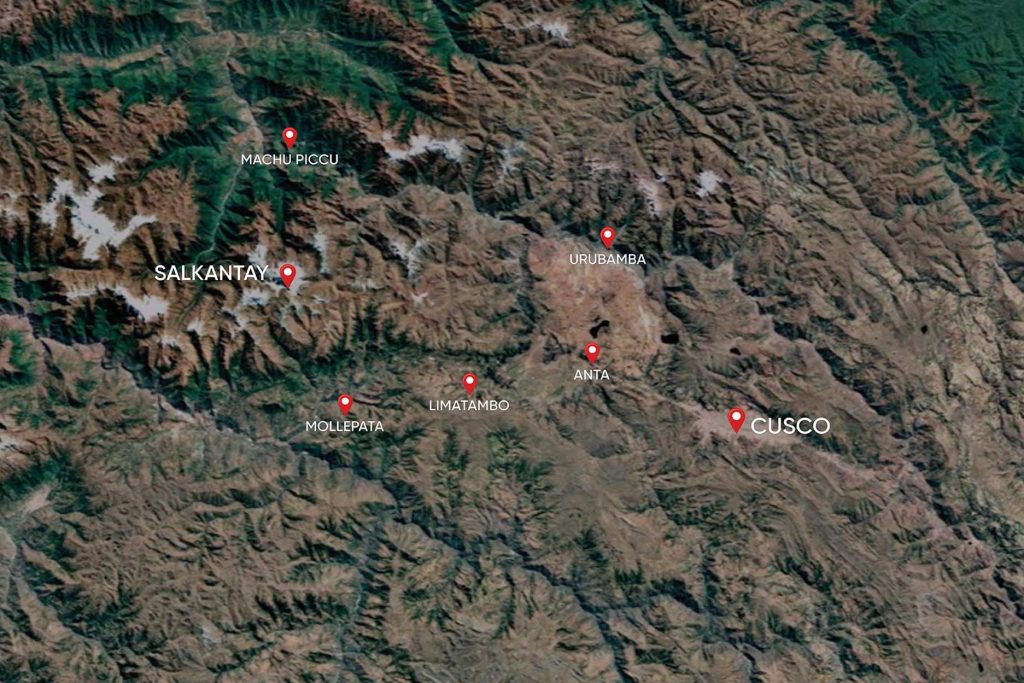
Where Is It Located?
The majestic Salkantay Mountain rises in the Vilcabamba Mountain Range in southern Peru, within the Cusco region. Standing at an impressive 6,271 meters (20,574 feet), it stretches across the provinces of Cusco, La Convención, Anta, and Urubamba — covering districts such as Santa Teresa, Mollepata, Limatambo, and Machu Picchu.
Located about 100 kilometers (62 miles) northeast of Cusco, this Andean giant dominates a landscape where cold winds intertwine with the vibrant green of the valleys.
Meaning of Salkantay
The name Salkantay comes from the Quechua language and translates as “wild mountain” or “savage mountain.” It derives from the words “Sallqa,” meaning wild or untamed, and “Antay,” referring to the Andes or an avalanche — a reflection of nature’s raw power.
This linguistic origin perfectly captures the commanding energy and challenging spirit of one of the most majestic peaks in the Peruvian Andes.
History of Mount Salkantay
The history of Mountain Salkantay is deeply intertwined with the Andean worldview. Since Inca times, it has been revered as an Apu, a sacred mountain deity believed to control the weather and ensure the fertility of the land.
During the Inca period, Salkantay was regarded as a spiritual guardian of Cusco and a vital point in the sacred Andean landscape. Communities offered pagos a la tierra (offerings to Mother Earth) using coca leaves, corn, and animal blood to secure good harvests and protection. Nearby villages such as Limatambo, Mollepata, and Choquequirao maintained a direct relationship with this Apu, honoring it through ancestral rituals.
That spiritual bond remains alive to this day. Locals still perform traditional offerings with coca leaves, chicha (corn beer), and typical Cusco dishes to thank nature for its gifts. Mountain Salkantay continues to symbolize strength, balance, and harmony with Pachamama, serving as a sacred link for communities across southern Peru.

The Classic Salkantay Trek to Machu Picchu
The Salkantay trek to Machu Picchu is one of the most thrilling adventure experiences in Peru. This legendary route combines stunning Andean landscapes, tropical forests, and ancient culture in a single journey. Each day reveals new ecosystems, breathtaking scenery, and genuine encounters with local communities in the Cusco region.
Trail Facts
The Classic Salkantay Trail is one of Cusco’s most complete and rewarding treks. Below is a detailed summary with the main technical data and highlights of this remarkable adventure:
| Aspect | Detailed Description |
| Total Duration | 5 days and 4 nights (classic itinerary) |
| Total Distance | 78.5 km / 48.77 miles |
| Difficulty Level | Moderate to challenging – requires good physical condition and prior acclimatization |
| Highest Point | 4,630 m / 15,190 ft – Salkantay Pass |
| Lowest Point | 2,040 m / 6,693 ft – Aguas Calientes |
| Starting Point | Challacancha (3,800 m / 12,467 ft) |
| Ending Point | Aguas Calientes (Machu Picchu Pueblo) |
| Terrain Type | High mountain, inter-Andean valleys, cloud forest, and high jungle |
| Climate | Cold in the highlands and warm-humid in the tropical forest |
| Daily Hiking Average | Between 10 and 25 km per day |
| Recommended Pace | Constant pace with breaks to acclimatize and enjoy the landscapes. |
| Main Highlights | Humantay Lagoon, Salkantay Pass, Collpapampa, Lucmabamba, Llactapata, Hydroelectric Station, and Machu Picchu |
| Exclusive Campsites | Sky Camp, Mountain Sky View, and Jungle Domes |
Map of the Salkantay route

Variants of the Classic Salkantay Route
The Salkantay trek guide offers various route options designed for every type of traveler — from quick adventures to multi-day expeditions. Each version blends breathtaking scenery, ancient culture, and well-organized services.
Below, we present the main Salkantay packages, all designed to make the most of the magic of the Andes and reach Machu Picchu via an alternative route to the classic Inca Trail.
Humantay Lagoon & Salkantay Pass (2 Days)
Perfect for travelers short on time but unwilling to miss the essentials. This short route includes the stunning Humantay Lagoon and the challenging Salkantay Pass — ideal for acclimatization before longer treks or as a brief but intense adventure escape.
Premium Salkantay Trek – 5 Days
Created for travelers seeking comfort and exclusivity, this version includes accommodation in the Sky Camp, Mountain Sky View, and Super Jungle Domes, along with gourmet meals and personalized service. It also features a relaxing visit to the Cocalmayo hot springs. This route combines nature, culture, and luxury in perfect harmony amid the Andes.
Salkantay Honeymoon Trek – 5 Days
A romantic adventure crafted for couples who want to experience the magic of the Andes together. The program includes charming accommodations, special details, and unforgettable landscapes — blending the thrill of trekking to Machu Picchu with intimate moments in nature.
Salkantay Basecamp Trek – 5 Days
Focused on an authentic mountain camping experience, this version includes overnight stays at the Salkantay Trekking Basecamp. Ideal for pure trekking enthusiasts and glacier lovers, it offers a closer connection to nature and a truly Andean atmosphere.
Salkantay & Short Inca Trail – 6 Days
A unique fusion of two legendary routes. After crossing the Salkantay Pass, travelers continue along the final stretch of the Inca Trail toward Machu Picchu. It’s a complete experience that combines nature, history, and spirituality.
Salkantay & Classic Inca Trail – 7 Days
A challenging yet rewarding adventure that merges both iconic treks. It features breathtaking views, archaeological sites, and diverse ecosystems. Though it requires good physical fitness, it offers a profound connection with Inca history and the spirit of the Andes.
Imperial Salkantay Trek – 8 Days
Perfect for those who prefer to trek at a relaxed pace. This option includes acclimatization days in Cusco, cultural visits, and a full journey to Machu Picchu. It’s a well-rounded experience that blends adventure, culture, and rest in equal measure.
Each of these Salkantay trek options offers a unique way to experience the grandeur of Apu Salkantay. Whether in a short hike or an extended expedition, the journey promises unforgettable landscapes, spiritual connection, and a triumphant arrival at Machu Picchu — the crown jewel of the Andes.
Discover the different versions of the Salkantay Trail and choose the program that best fits your dream journey.

What to See and Do on the Salkantay Trek
On this Salkantay trek guide, we will see turquoise lakes, sacred mountains, and ancient Inca trails steeped in history. Each day presents a new landscape, from the glaciers of Apu Salkantay to the tropical forest that leads to the majestic citadel of Machu Picchu.
Humantay Lagoon
Nestled beneath the Humantay Glacier, this turquoise lagoon is one of the natural gems of the Salkantay route. The climb is steep and demanding, but every step is rewarded by breathtaking views and the peaceful beauty of the place.
Many visitors take a moment to offer small coca leaf tributes to Apu Humantay, thanking the mountain for its energy and protection during the trek.
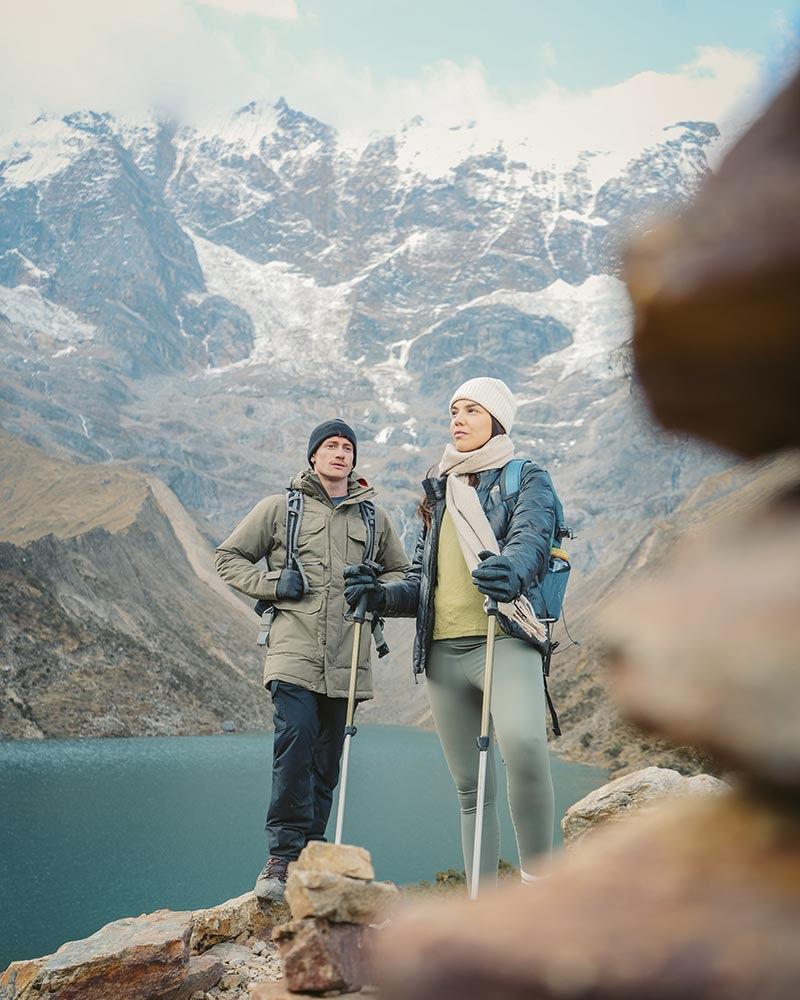

Mountain Salkantay
Rising to 6,271 meters (20,574 feet), the imposing Apu Salkantay stands as the sacred guardian of the trail. Revered by local communities, this snow-capped peak commands respect and admiration. Its presence dominates the horizon, symbolizing the spiritual connection between the earthly and divine worlds — a reminder of the Andean belief in the living power of nature.
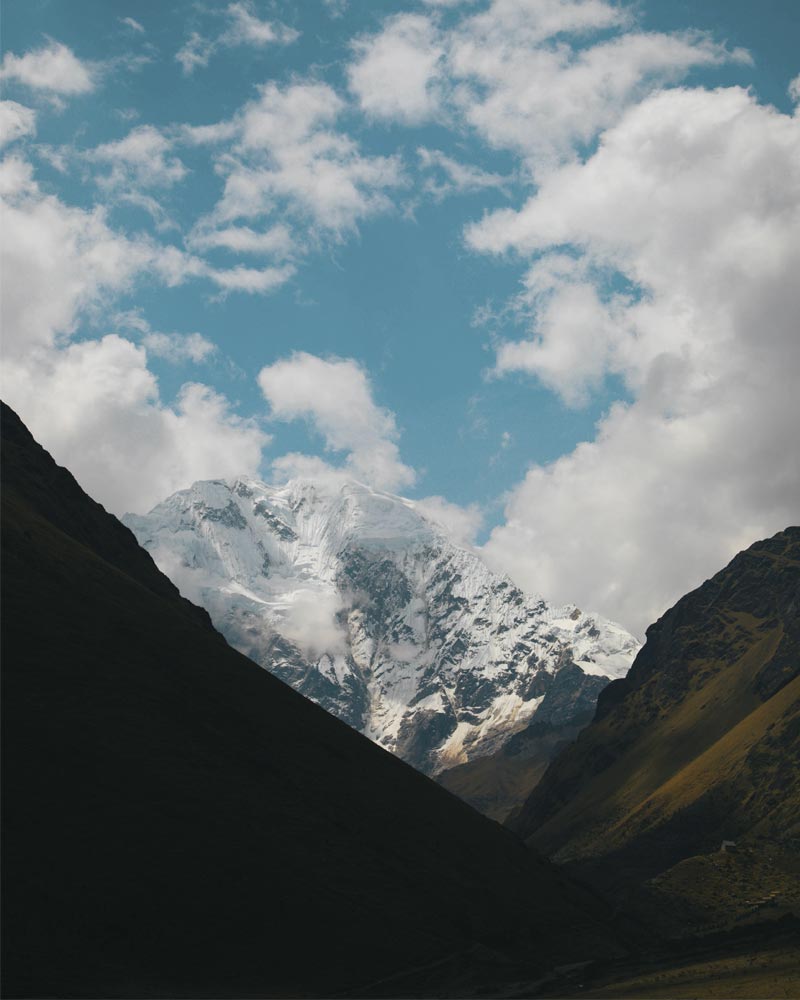

Salkantay Pass
The highest point of the trek sits at 4,650 meters (15,190 feet) above sea level. From this mountain pass, the scenery transforms dramatically — shifting from icy Andean glaciers to the lush green valleys of the cloud forest below.
Reaching the Salkantay Pass is a moment of triumph for trekkers, who experience both the chill of the high Andes and the approaching warmth of the Amazon basin.
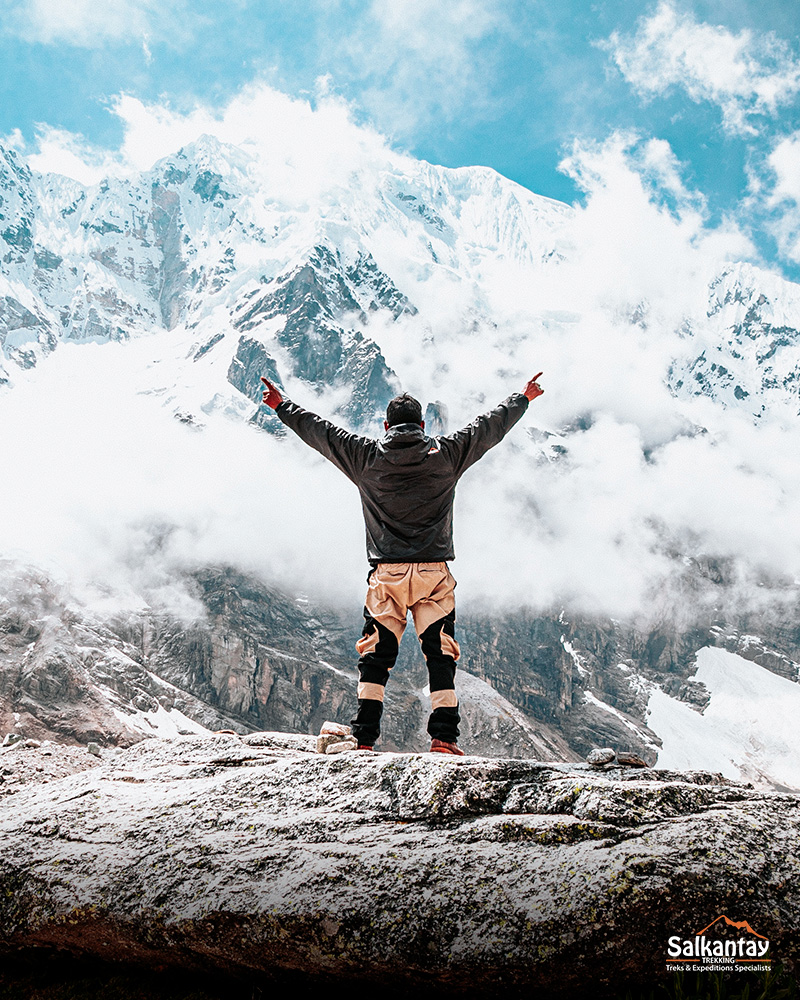

Llactapata
The Llactapata Archaeological Site is one of the hidden treasures along the Salkantay trek to Machu Picchu. This 15th-century Inca complex sits on a mountainside overlooking a spectacular view of Machu Picchu, framed by the surrounding forest. Its stone terraces and walls showcase Inca architectural precision and perfect harmony with nature.
In ancient times, Llactapata served as a rest stop for pilgrims traveling to Vilcabamba, the last Inca capital. Today, it offers travelers a peaceful, crowd-free viewpoint — a sacred spot to contemplate the landscape and feel the ancestral energy of the original Inca Trail. It’s undoubtedly one of the most magical highlights of the Salkantay route.
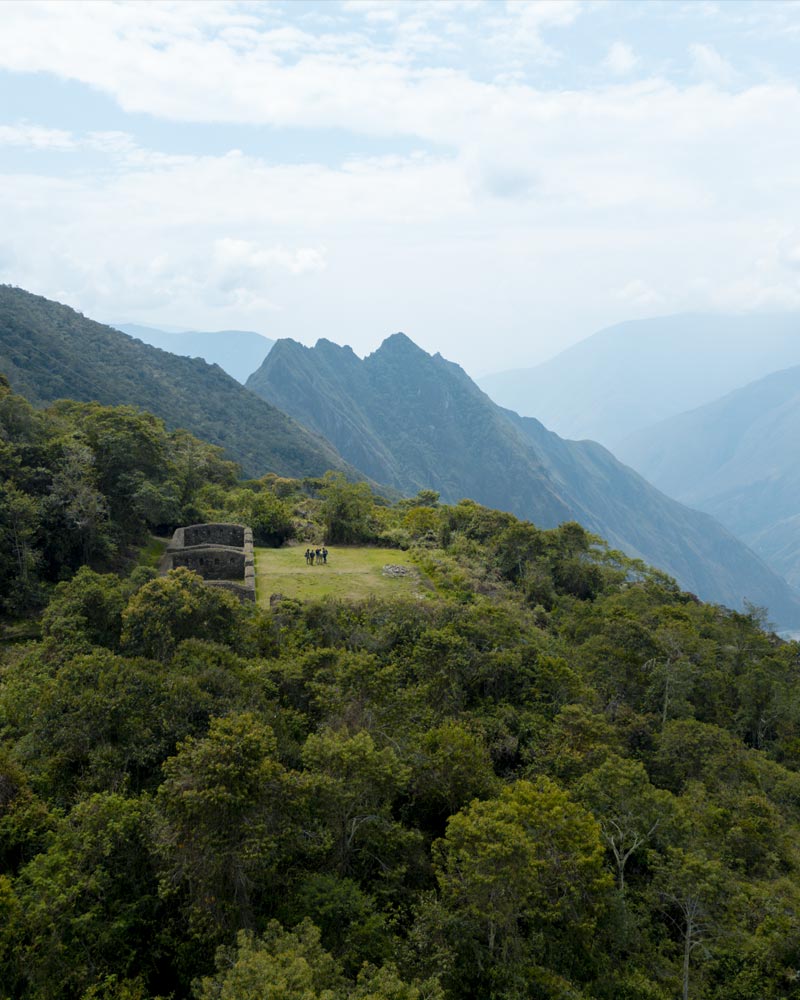
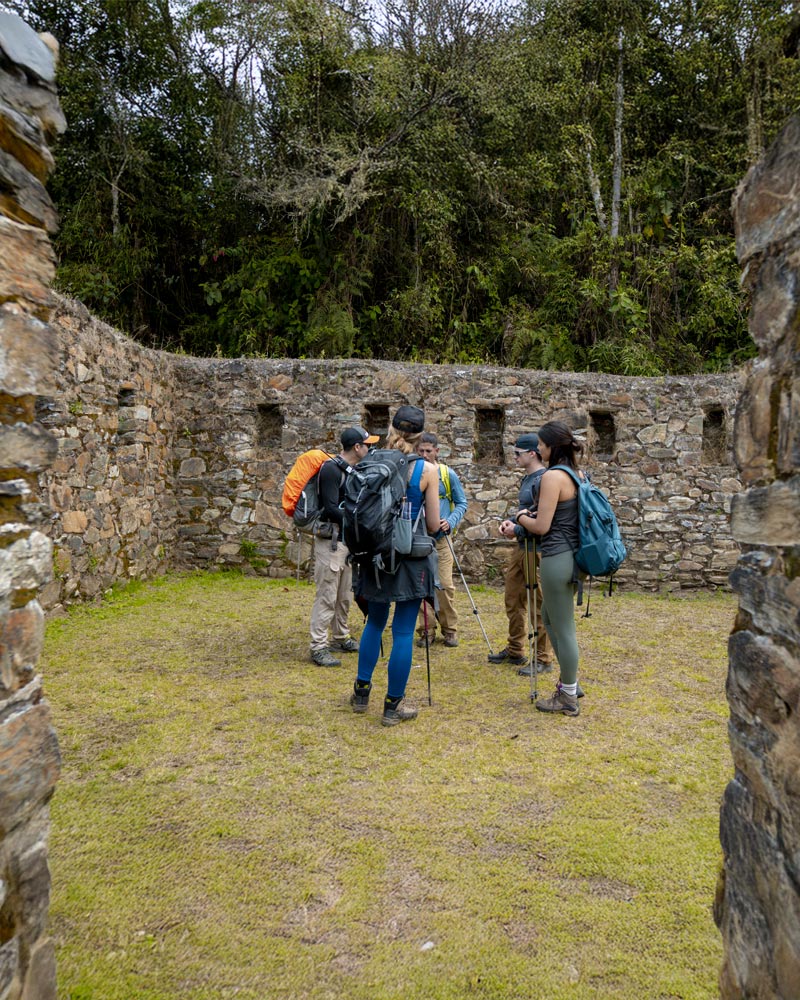
Connect with Nature
The Salkantay trek crosses incredibly diverse ecosystems. Within a few days, hikers journey from glacial peaks to tropical jungles, experiencing cold, temperate, and humid climates.
This transition showcases the astounding Andean biodiversity — orchids, colorful birds, butterflies, waterfalls, and crystal-clear rivers accompany travelers along the way, making every moment feel alive and immersive.


The Cloud Forest
After descending from the Salkantay Pass, the environment changes entirely. The air becomes warmer and moister, blanketed in mist — giving this region its name, the “cloud forest.”
This area teems with life, including the Andean cock-of-the-rock (Peru’s national bird). The Santa Teresa Valley, part of this lush region, offers breathtaking views and a tranquil setting to rest and recover after the high-altitude challenge.

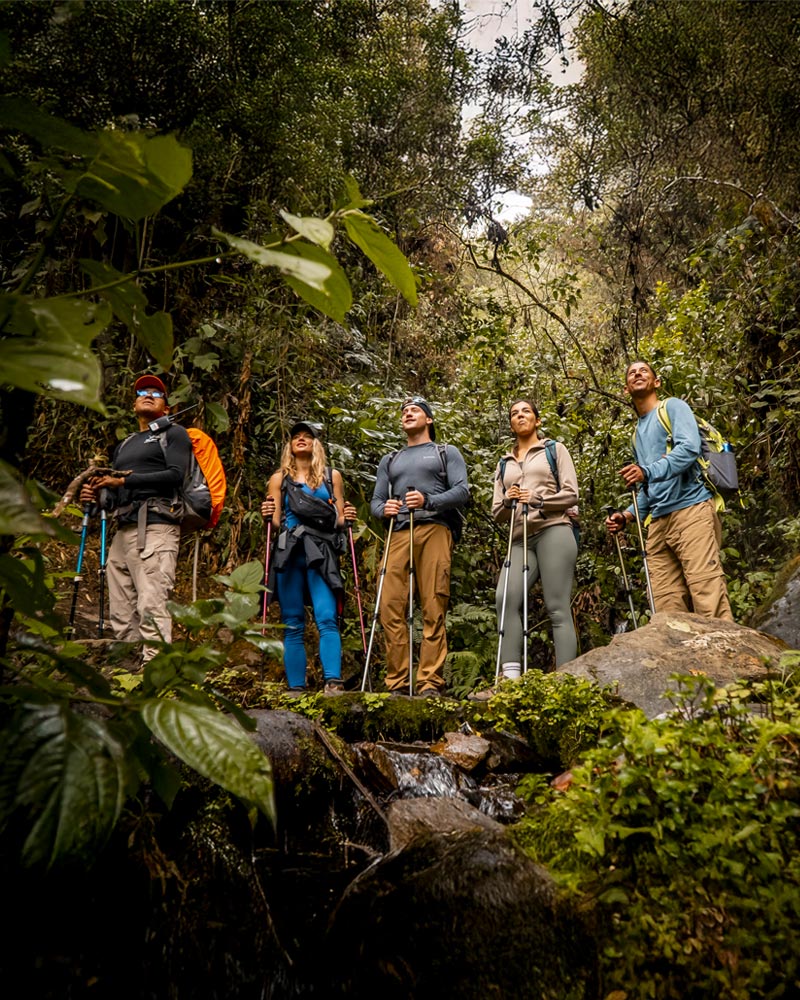
The Coffee Experience
One of the most authentic moments on the Salkantay trek to Machu Picchu is visiting the organic coffee plantations of Santa Teresa. Local families grow high-altitude Arabica beans known for their exceptional aroma and quality, blending tradition, sustainability, and Andean culture.
Participating in this experience supports responsible ecotourism and reveals the craftsmanship behind every cup.
During the visit, you’ll learn the entire process — from harvesting and roasting to grinding and tasting. The day ends with a freshly brewed cup of coffee, surrounded by mountains and the sound of the river. It’s one of the most memorable and sensory highlights of the Salkantay trek.
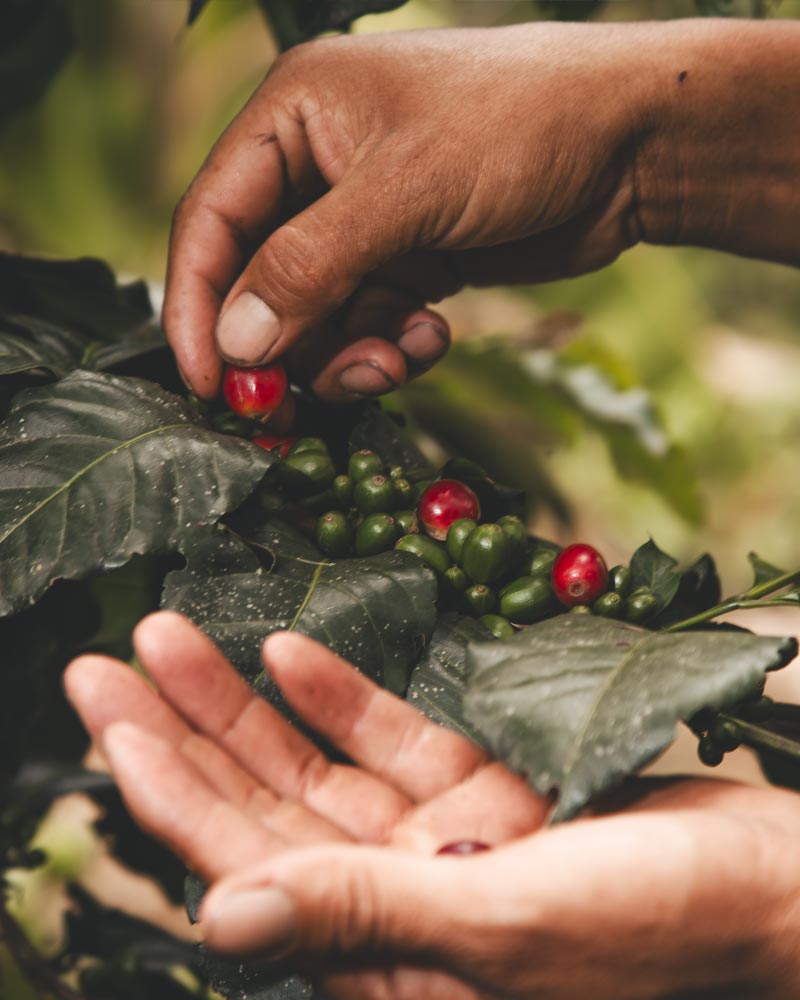

Aguas Calientes (Machu Picchu Pueblo)
The trail concludes in the charming town of Aguas Calientes, also known as Machu Picchu Pueblo — the final stop before visiting the Inca citadel. Here, you can relax in the natural hot springs, browse the artisan market, or enjoy a traditional dinner featuring local ingredients.
It’s the perfect place to recharge your energy before the grand finale of your adventure.
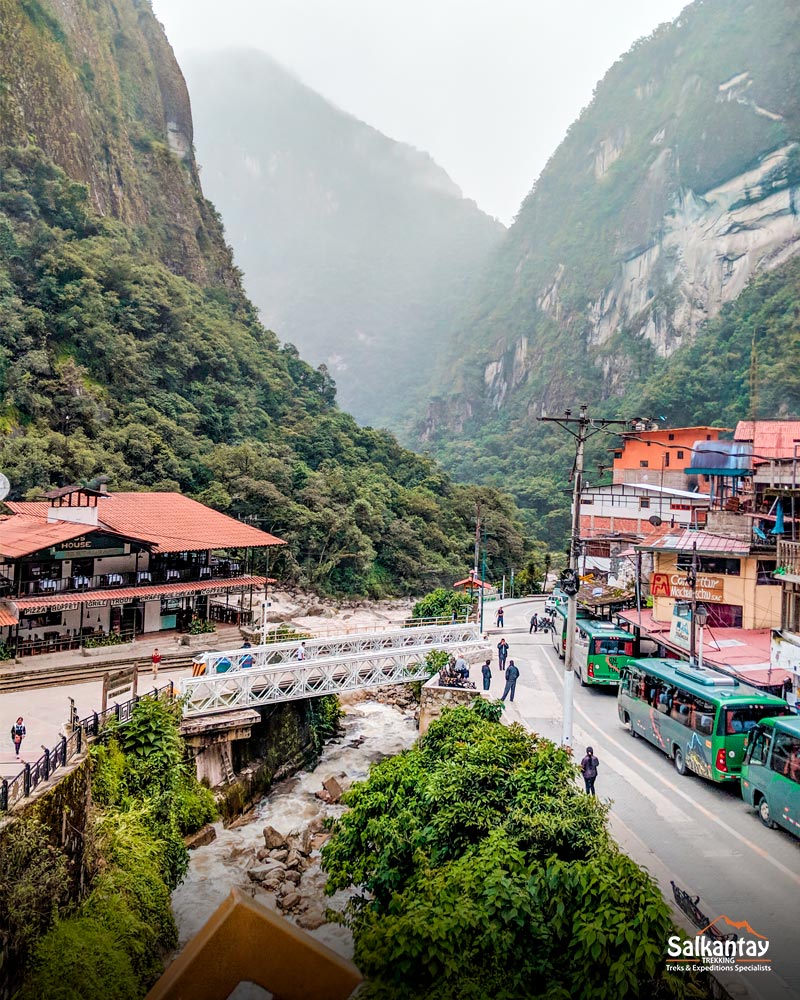
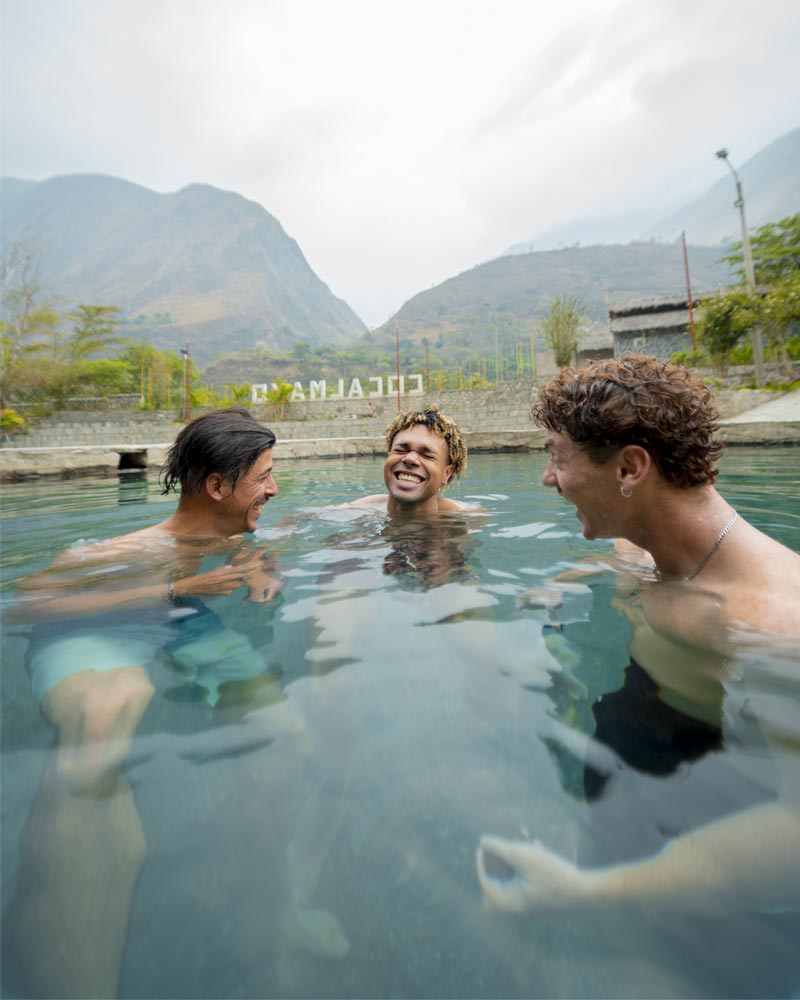
Machu Picchu
Your journey reaches its peak with a visit to the citadel of Machu Picchu, one of the New Seven Wonders of the World. This sacred site unites spirituality and natural beauty in an awe-inspiring setting.
Walking through its temples, terraces, and viewpoints at sunrise is an unforgettable experience — the perfect reward after completing the legendary Salkantay trek.
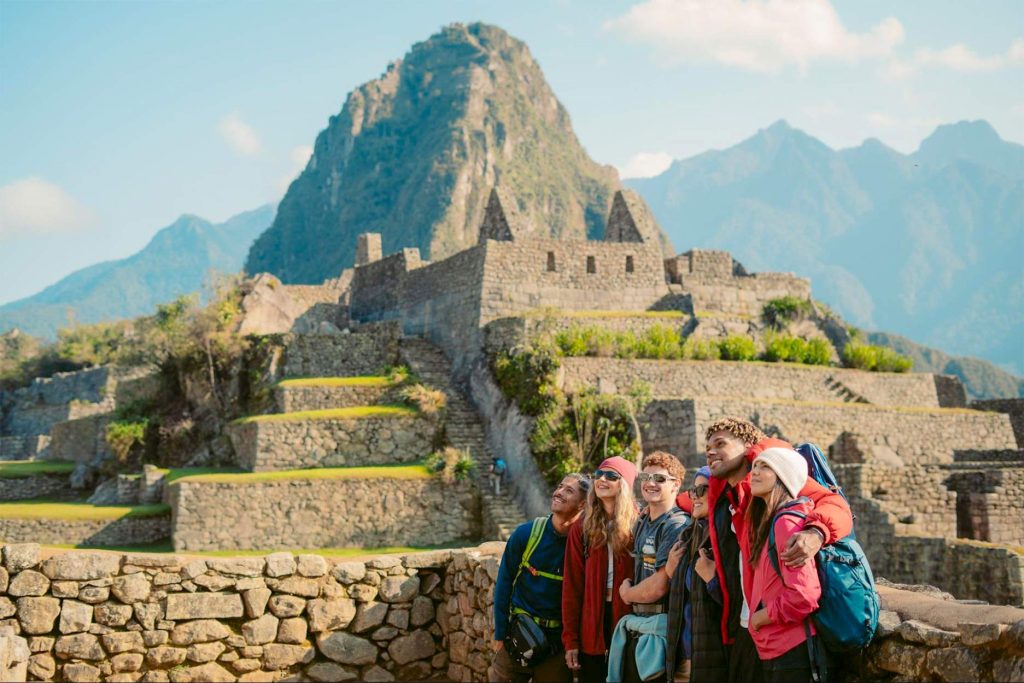
Our Exclusive Campsites
On the Salkantay trek to Machu Picchu, the adventure isn’t only found on the trail — it also lives in every place you rest. The exclusive campsites designed by Salkantay Trekking combine comfort, ecological design, and unforgettable scenery.
Each one offers a unique experience that complements the essence of this Salkantay trek guide and enhances your journey through the Andes.
Sky Camp
Located in Soraypampa (3,900 m / 12,795 ft), the Sky Camp offers a one-of-a-kind experience along the Salkantay trek to Machu Picchu. Its elegant glass domes allow you to admire the starry night sky, the imposing Apu Salkantay, and the Humantay Glacier — all from the comfort of your bed.
Designed to connect heaven and earth, this eco-friendly camp blends sustainability with panoramic 360° views and a deep spiritual connection to the Andes.
The complex includes clean restroom facilities and a dome-shaped dining room where chefs prepare balanced meals using organic local ingredients. A central fireplace creates a cozy atmosphere perfect for sharing stories with fellow travelers.
With 32 domes and capacity for 64 guests, Sky Camp combines adventure and comfort in perfect harmony — an unforgettable experience beneath the stars of Cusco.
Mountain Sky View
Nestled in Collpapampa (2,950 m / 9,678 ft), the Mountain Sky View redefines rest along the Salkantay trek with its exclusive Andean glamping concept. Built with ichu (Andean grass) and glass structures, each lodge offers panoramic mountain views without leaving your room.
Every accommodation includes a private bathroom, a hot shower, and a comfortable bed facing the snow-capped peaks. After crossing the Salkantay Pass, this peaceful mountain lodge is the perfect place to recharge.
Guests can enjoy locally inspired dishes in the dome dining area while the sunrise paints the valleys in gold. Mountain Sky View merges nature, comfort, and serenity to create a truly memorable Andean experience.
Super Jungle Domes
The Super Jungle Domes represent the most exclusive and modern lodging experience on the Salkantay trek to Machu Picchu. Located in the heart of the tropical forest, they blend luxury and nature in perfect balance.
These advanced domes provide thermal insulation, insect protection, and a comfortable environment throughout your stay. Each dome features spacious beds, private bathrooms with hot water, electricity, and unlimited Wi-Fi — ensuring the same comfort as a boutique hotel.
Surrounded by jungle views and the song of exotic birds, the Super Jungle Domes are the ideal retreat for relaxing after your trek and reconnecting with the living energy of nature.
Jungle Domes
The Jungle Domes offer an authentic experience in the middle of the tropical forest during the Salkantay trek to Machu Picchu. Located in the lush cloud forest of Lucmabamba (2,000 m / 6,562 ft), these eco-lodges are fully integrated with their surroundings. Their sustainable design reflects a strong commitment to environmental conservation and respect for local communities.
Each dome provides essential comfort while preserving a deep connection with the natural world. With clean bathrooms, hot showers, and a cozy dining area, the Jungle Domes invite travelers to rest surrounded by abundant greenery — a genuine immersion into the Andean–Amazonian ecosystem.
Basecamp Domes
The Basecamp Domes mark the starting point of the Salkantay trek to Machu Picchu, combining adventure, comfort, and respect for nature. Located in Soraypampa (3,900 m / 12,795 ft), they offer the perfect setting to begin your acclimatization, surrounded by pure mountain air and spectacular views.
Upon arrival, you’ll enjoy a wholesome lunch made with local ingredients before visiting the stunning Humantay Lagoon, a turquoise mirror at the foot of the glacier. Back at camp, a comforting dinner, a star-filled sky, and the warmth of your dome prepare you for the days ahead — to conquer the sacred paths of Salkantay.
Read our “Exclusive and Private Camps” section to find out where to rest comfortably during your dream journey. Discover our unique domes surrounded by nature—designed for an unforgettable experience.
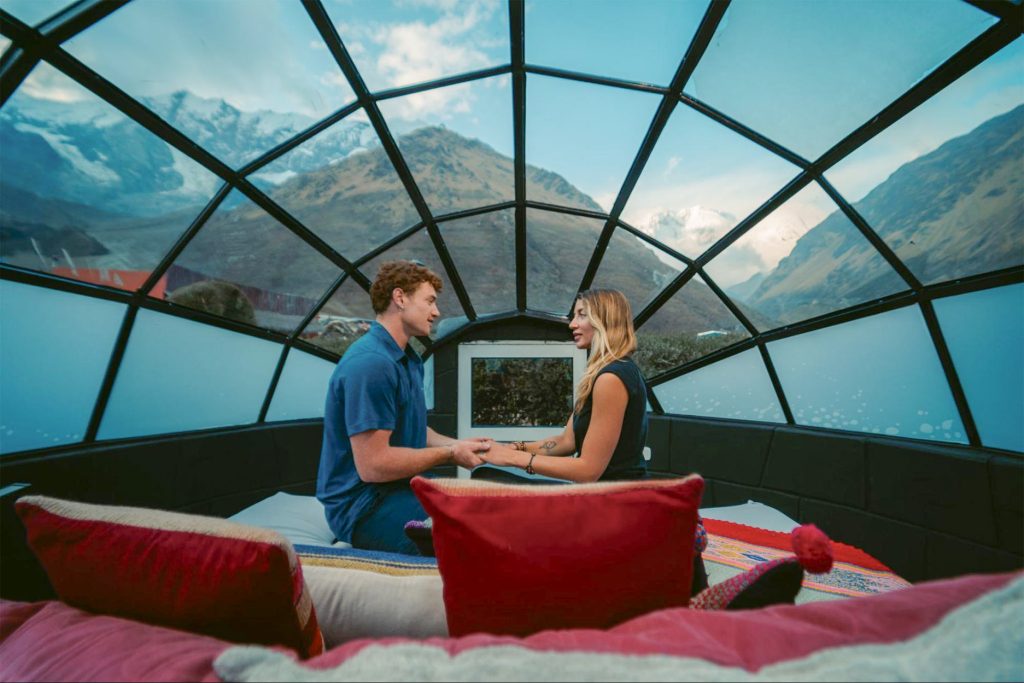
Best Time to Do the Salkantay Trek
The best time to embark on the Salkantay trek to Machu Picchu is during the dry season, from May to October. During these months, the skies are clear, and the landscapes display their most vibrant beauty. The trails are also more stable, offering a safer and more comfortable experience.
In this Salkantay trek guide, we recommend this period for the best combination of scenery and safety. Days are sunny and bright, while nights can be cold — especially at higher elevations like the Salkantay Pass. The crystal-clear views of the snow-capped peaks and Humantay Lagoon are perfect for photography.
This season also allows you to experience the contrasting worlds of glacial mountains and tropical jungle without the inconvenience of mud or mist.
Weather on the Salkantay Trek
The weather along the Salkantay trek to Machu Picchu varies greatly because the route passes through multiple ecological zones. In a single day, you can move from freezing temperatures to warm, humid tropical air.
For that reason, it’s essential to dress in layers, carry sunscreen, and pack a reliable rain jacket.
In the Andean highlands, mornings tend to be chilly, while afternoons can be pleasantly warm and sunny. As you descend into the cloud forest, the environment becomes more humid and temperate. This diversity makes every stage of the Salkantay trek unique and full of surprises.
Rainy Season
The rainy season lasts from November to April, with the heaviest rainfall between January and March. During these months, the trails can become slippery, and visibility is often reduced due to fog. However, the landscapes burst into color — the vegetation thrives, rivers swell, and the valleys turn into vibrant green carpets.
For many nature enthusiasts, this period offers a different kind of beauty — one that’s serene, lush, and incredibly photogenic.
Planning your trip according to the weather is key to making the most of your adventure.
The Salkantay trek to Machu Picchu is unforgettable in any season, but during the dry months, it reveals its most majestic side.
We recommend reading our blog “Best Time to Visit Cusco, Peru” to find out when the weather is perfect for exploring the region and enjoying your Salkantay adventure to the fullest.
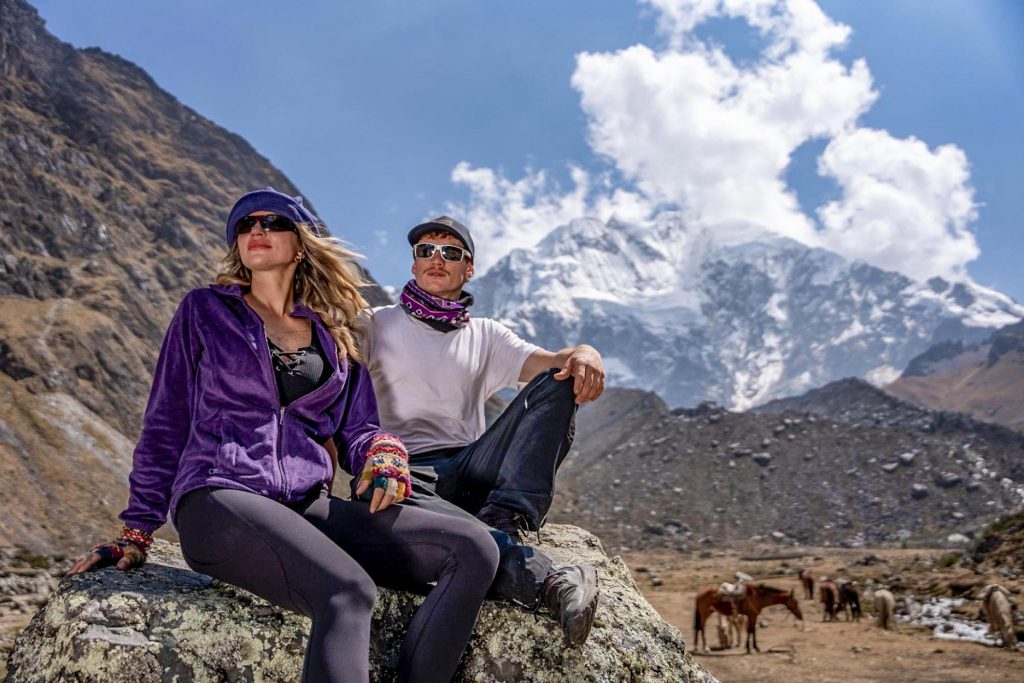
How to Prepare for the Salkantay Trek
Preparing for the Salkantay trek to Machu Picchu requires a mix of physical strength, a positive mindset, and the right gear. This high-altitude adventure demands endurance, planning, and healthy habits before your journey. With proper preparation, you’ll be ready to enjoy every step of this Andean trail with energy and confidence.
In this Salkantay trek guide, we’ll walk you through the essential tips to make your trek safe, enjoyable, and unforgettable.
Physical Preparation
Start training your body several weeks before your trip. Go on weekly hikes that include long uphill and downhill sections — this helps strengthen your legs and lungs, both crucial for high-altitude trekking.
Gradually increase the duration and intensity of your hikes to adapt to the sustained effort required on the Salkantay trail. Building endurance early will make your experience far more enjoyable.
Gear and Footwear
Bring comfortable, well-worn hiking boots — never start the trek with new footwear, as it can cause blisters and discomfort. Make sure your trekking poles are adjusted to your height and practice using them before your trip.
Your backpack should include layered clothing, a waterproof jacket, sunscreen, and a reusable water bottle. Weather conditions can shift quickly, so being ready for cold, rain, or heat is essential.
As any experienced Salkantay trek guide will tell you, the right equipment can make all the difference between a comfortable trek and a tiring one.
What to Pack
Here’s a checklist of essentials for the Salkantay trek:
- Comfortable and durable hiking boots
- Layered clothing (including a warm jacket)
- Rain poncho or waterproof jacket
- Sunscreen and hat
- Sunglasses
- Reusable water bottle
- Energy snacks (nuts, granola bars, dried fruit)
- Basic first aid kit
- Trekking poles (optional)
- Headlamp with spare batteries
- Camera or phone with power bank
- Insect repellent
- Cash for extra expenses
Packing smart will keep your load light but functional — helping you focus on the scenery, not the struggle.
Nutrition and Energy
Your diet plays a key role in maintaining strength throughout the trek. In the days leading up to your Salkantay trek, eat complex carbohydrates like legumes and vegetables, lean proteins such as fish or chicken, and plenty of fresh fruits.
Stay hydrated and avoid alcohol or heavy meals that can affect your performance.
During the hike, bring quick-energy snacks like nuts, dried fruit, or energy bars. These will keep you going on steep ascents. Remember: hydration is your best defense against altitude sickness.
Mental Preparation and Acclimatization
Mental strength is just as important as physical conditioning on the Salkantay trek. Keep a positive attitude, set small daily goals, and focus on enjoying the journey rather than just reaching the destination. A calm mind helps you connect deeply with the landscapes and the Andean spirit.
If possible, spend at least two days in Cusco before your trek to acclimatize to the altitude. This adjustment will reduce the risk of altitude sickness and improve your performance.
Use that time to rest, hydrate, and eat lightly while exploring the city’s culture and charm.
Ultimately, remember that the Salkantay trek to Machu Picchu is not just a hike — it’s a personal journey of growth. Each step brings you closer not only to the Inca citadel but also to a stronger, more resilient version of yourself.
As this Salkantay trek guide reminds you, preparation is the key to a safe, inspiring, and truly unforgettable adventure.
Read “How to Prepare for the Salkantay Trek to Machu Picchu” to learn practical tips for training, packing, and staying strong during your Andean journey.
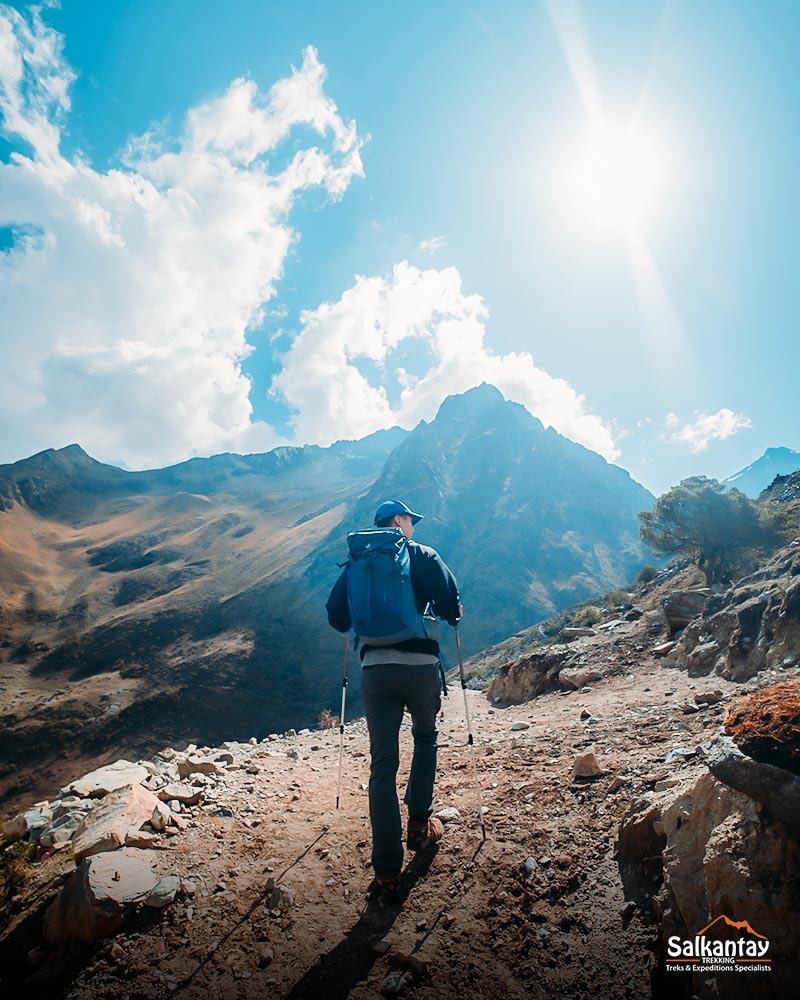

Other Alternative Trekking Routes in Cusco
Beyond the famous Salkantay trek to Machu Picchu, the Cusco region offers a wide variety of alternative trekking routes that attract all kinds of travelers. Each trail shows stunning Andean scenery, vibrant culture, and a strong connection with nature.
As this Salkantay trek guide highlights, these routes are ideal for those seeking something unique — a balance of adventure, history, and authenticity.
1. Inca Jungle Trek
This is one of the most exciting and versatile routes to Machu Picchu. It combines hiking, mountain biking, rafting, and jungle trekking, creating an adrenaline-filled experience from start to finish.
The trail crosses multiple ecosystems — from the high Andes to lush tropical forests — before culminating at the majestic citadel of Machu Picchu after several days of culture, nature, and pure adventure.
2. Lares Trek
Perfect for travelers interested in Andean culture and local traditions, this trek passes through remote villages that preserve their ancestral customs and colorful textiles.
Between snow-capped mountains, turquoise lagoons, and rural communities, hikers experience an intimate connection with traditional Andean life and its natural landscapes.
3. Inca Quarry Trek (Cachicata)
This lesser-known route follows historic Inca trails used to transport stones for the construction of Machu Picchu. The journey passes ancient quarries, archaeological ruins, and stunning mountain scenery, offering a glimpse into the engineering genius of the Inca civilization.
It’s perfect for travelers seeking a peaceful trail rich in history and natural beauty.
4. Ancascocha Trek
Known as one of Cusco’s most challenging and scenic hikes, the Ancascocha Trek crosses high mountain passes, crystal-clear lagoons, and remote valleys far from the crowds.
It’s designed for experienced trekkers looking for an epic physical and mental challenge before reaching Machu Picchu.
5. Huchuy Qosqo Trek
This short but rewarding route is perfect for those with limited time who still want to experience the Andes. It connects Inca ruins, lagoons, and panoramic viewpoints of the Sacred Valley, providing a compact yet authentic cultural adventure.
The Huchuy Qosqo Trek is ideal for travelers looking for accessibility without sacrificing history or natural beauty.
6. Machu Picchu + Rainbow Mountain
For those who want to combine the spiritual and the spectacular, this itinerary merges the Machu Picchu tour with a visit to the famous Rainbow Mountain (Vinicunca).
Trekkers experience surreal landscapes painted with natural colors, crisp mountain air, and panoramic Andean views. It’s a visually stunning journey that perfectly complements the Salkantay trek.
7. Classic Inca Trail (4 Days)
The most iconic and sought-after route in Peru follows the original Inca path for 44 km (27.3 miles), crossing mountains, cloud forests, and ancient ruins before arriving at Inti Punku — the Sun Gate, the traditional entrance to Machu Picchu.
Due to its popularity, permits are limited and must be reserved months in advance.
Cusco is a destination that exceeds every traveler’s expectations. Whether you’re exploring the challenging Salkantay trek to Machu Picchu or discovering alternative routes like Lares or Ancascocha, each journey promises majestic scenery, authentic culture, and a profound connection with Peru’s living history.
To conclude this Salkantay trek guide, remember: trekking through these ancient paths is more than just walking — it’s a transformative journey across the heart of the Andes. Every step connects you with Inca history, the strength of nature, and the warmth of its people.
Plan, prepare wisely, and let the majestic Apu Salkantay guide you to the mystical city of Machu Picchu.

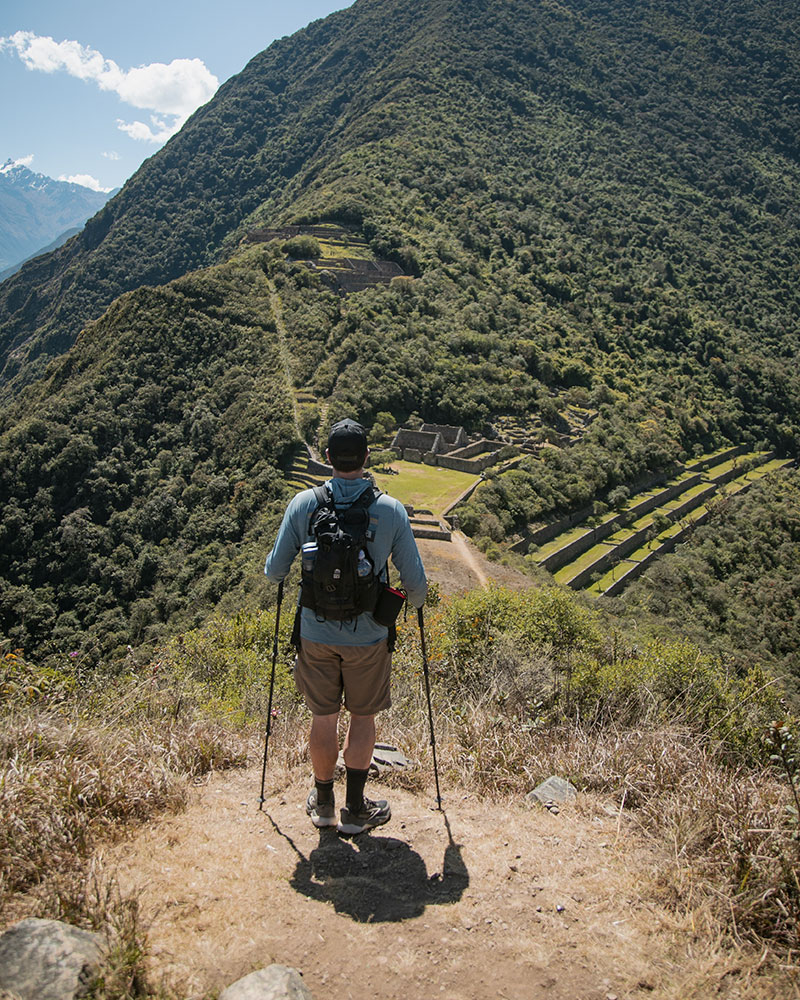
👉 Book your adventure with Salkantay Trekking and live a once-in-a-lifetime experience filled with nature, culture, and emotion.
Frequently Asked Questions (FAQ)
1. Is the Salkantay Trek Worth It?
Absolutely. The Salkantay trek to Machu Picchu is one of the most breathtaking routes in the Andes. It combines adventure, awe-inspiring landscapes, and authentic living culture.
Many travelers choose it over the Classic Inca Trail because it offers more freedom, fewer crowds, and greater diversity in scenery.
2. Is the Salkantay Route Difficult?
The trail is moderate to challenging, depending on your physical fitness and acclimatization. The second day is typically the most demanding because of the ascent to the Salkantay Pass (4,600 m / 15,092 ft).
Spending a few days in Cusco beforehand helps your body adjust to the altitude and makes the trek far more enjoyable.
3. Can I Do the Salkantay Trek Without Hiking Experience?
Yes. Even without prior hiking experience, you can complete the Salkantay trek. We recommend basic physical preparation and taking short hikes before your trip. Expert local guides from Salkantay Trekking will support you every step of the way to ensure a safe and rewarding experience.
4. How Is It Different from the Inca Trail?
Unlike the Classic Inca Trail, the Salkantay trek does not require limited permits and offers almost daily departures.
It’s less crowded, more ecologically diverse, and includes comfortable eco-lodges and glamping options. The Inca Trail focuses more on ancient ruins, while the Salkantay trek emphasizes natural beauty and open landscapes.
5. How Many Kilometers Do You Walk Each Day?
On average, you’ll hike for about 7 hours per day. The second day is the longest and most challenging.
Here’s a breakdown of the Classic 5-Day Salkantay Trek:
- Day 1: 10 km / 6.2 miles
- Day 2: 23.5 km / 14.6 miles
- Day 3: 17 km / 10.5 miles
- Day 4: 25 km / 15.5 miles
- Day 5: 3 km / 1.8 miles
Distances can vary slightly depending on your chosen itinerary.
6. How Much Does the Salkantay Trek Cost?
Prices depend on the package you choose.
- The classic 5-day trek costs around US$750.
- The premium version, with luxury lodges and gourmet meals, is about US$995.
- Shorter or combined versions start at US$300.
All packages include guides, meals, and the most necessary equipment.
7. What Kind of Accommodation Is Included?
During the Salkantay trek to Machu Picchu, you’ll stay in exclusive eco-camps such as Sky Camp, Mountain Sky View, and Jungle Domes.
Each offers hot showers, cozy beds, and stunning natural views — designed for rest and comfort after long trekking days.
8. Can I Do the Trek with Children?
Yes, families can enjoy the Salkantay trek, although it’s essential to consult a doctor beforehand, especially if children have pre-existing health conditions.
You’ll need to adapt the pace and take regular breaks. For steeper sections, local horse services are available — a great help for younger travelers.
9. What’s the Best Time of Year to Do the Salkantay Trek?
The dry season (May to October) is the best time, with clear skies and stable trails.
During the rainy season (November to April), the scenery becomes lush and green, though trails may be slippery. Both offer beautiful, distinct experiences depending on your preferences.
10. What Should I Bring?
Bring worn-in hiking boots, layered clothing, a rain poncho, sunscreen, and a reusable water bottle.
Other essentials include a headlamp, insect repellent, a first-aid kit, and cash for extra expenses along the way.
11. Is There Wi-Fi or Electricity on the Trail?
Yes. There’s Wi-Fi at the main camps and in the hotels in Aguas Calientes.
You can also recharge your devices, though energy availability is limited in certain remote areas.
12. Can I Rent Trekking Gear?
Yes. Sleeping bags, trekking poles, and other accessories are available for rent before starting the trek.
All equipment meets safety and comfort standards for high-altitude hiking.
13. Do I Need a Permit for the Salkantay Trek?
No special permit is required unless you’re combining the Salkantay trek with the Inca Trail.
There is, however, a small entrance fee of about 20 soles, usually included in your Salkantay Trekking package.
You may be interested in:
- Exploring the Unknown: Salkantay Premium Trek, 5 Days of Adventure
- Salkantay Trekking: The Best Tour Operator in Peru
- Trekking Routes in Cusco: Following the Wisdom of the Summits
- Adventure at Altitude! How to Train to Fully Enjoy Trekking in Peru
- Salkantay Mountain: The Complete Guide.
- Salkantay Trek vs Inca Trail: Which is the Best Trek to Machu Picchu?


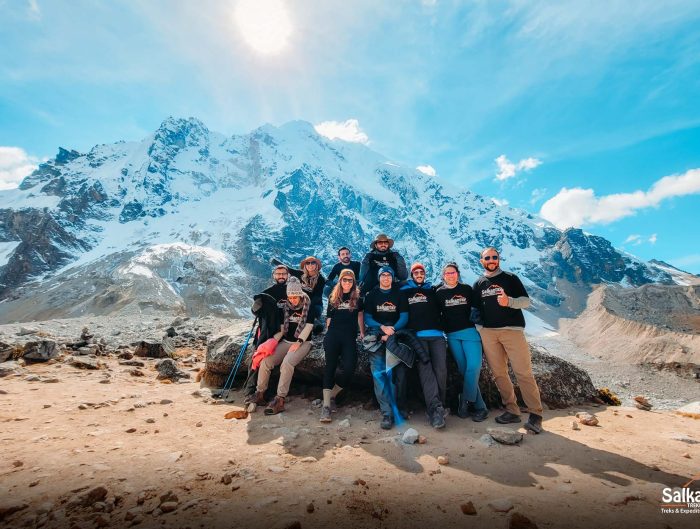


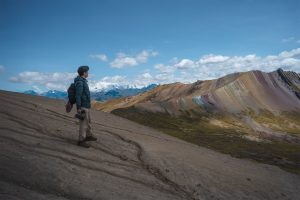
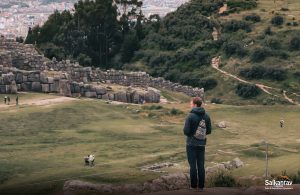
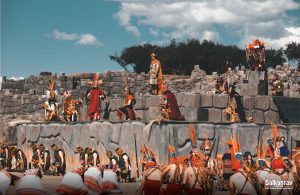
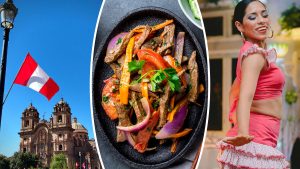

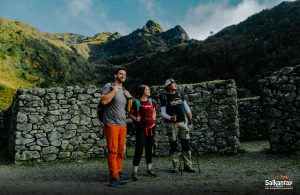
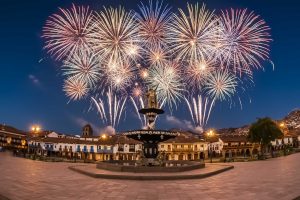
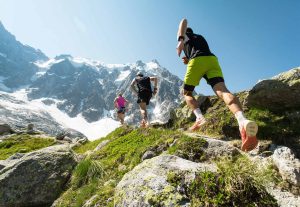

Leave A Reply